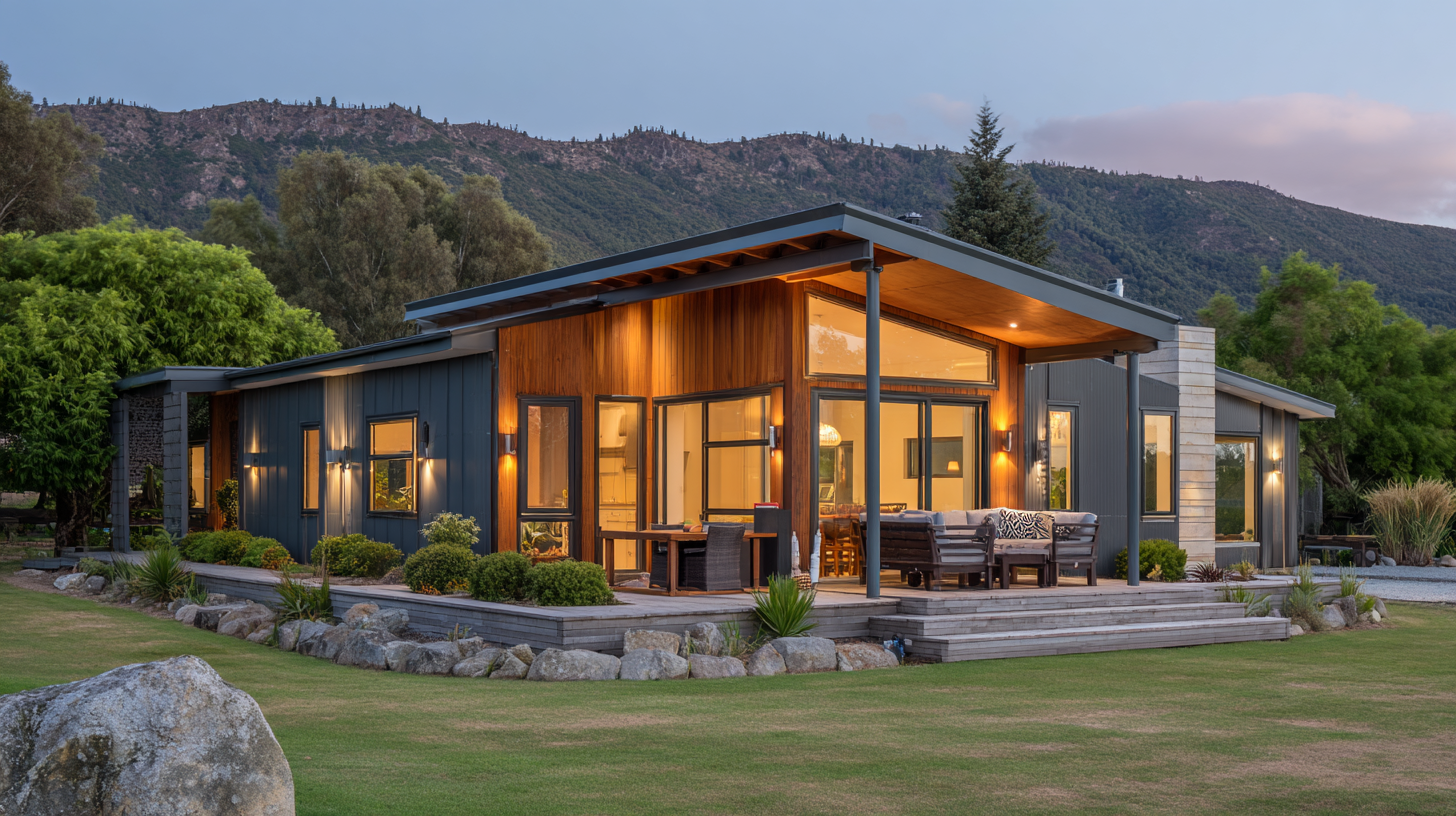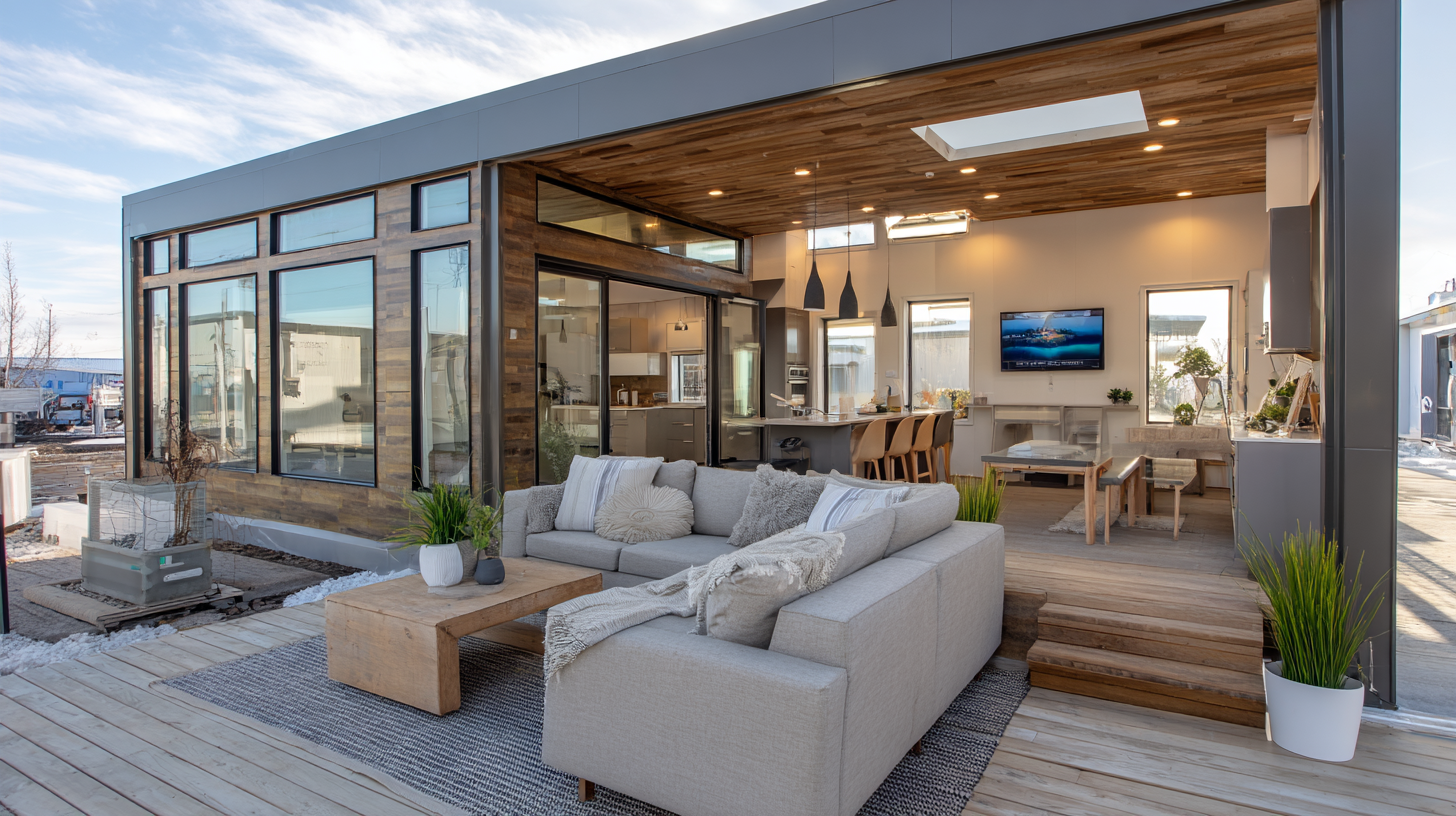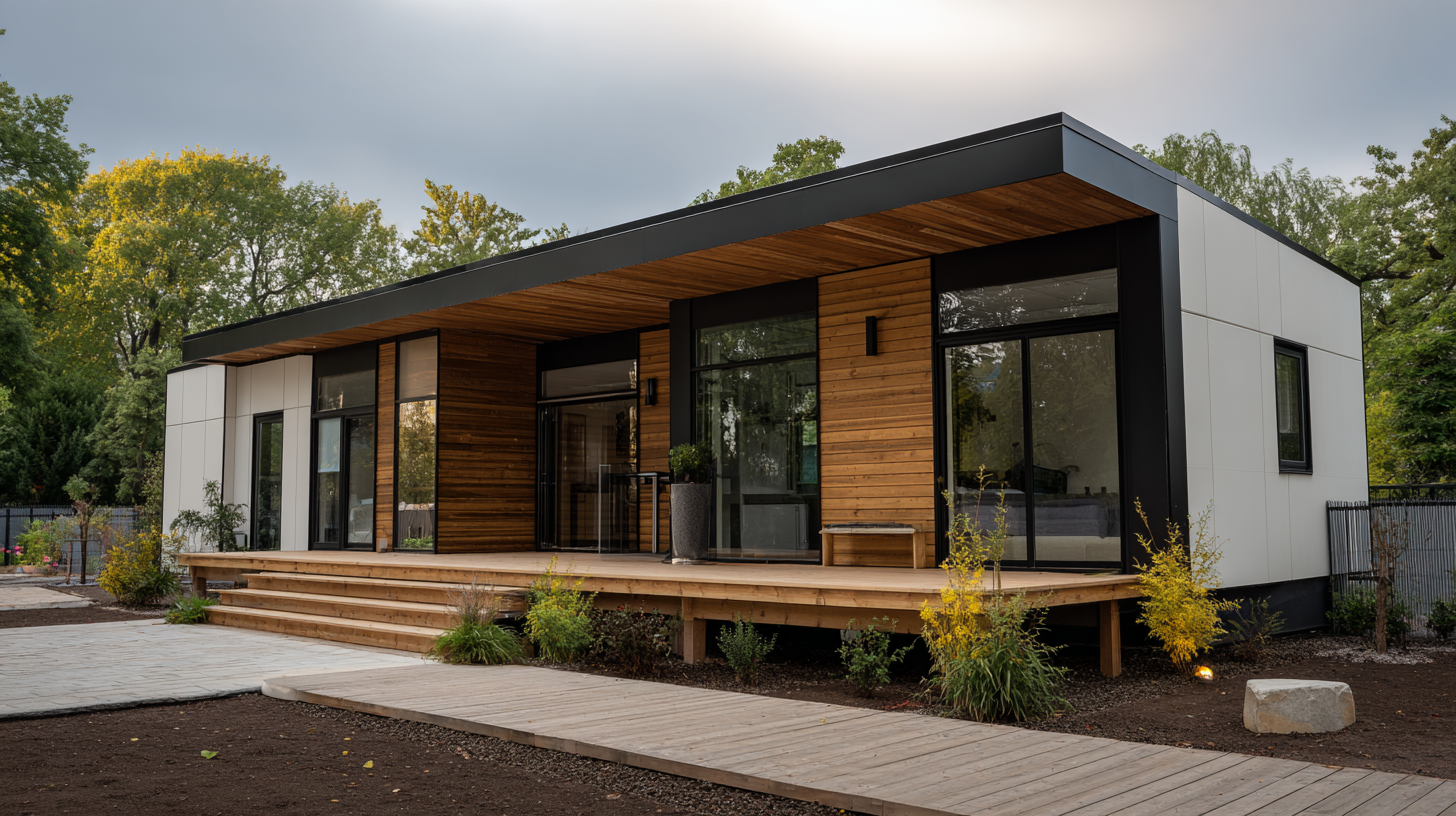How to Choose the Perfect Prefabricated Home for Your Family's Needs
Table of Contents
- Understanding Your Family's Unique Needs for a Prefabricated Home
- Key Factors to Consider When Choosing a Prefabricated Home Design
- Evaluating Budget and Financing Options for Prefabricated Homes
- Exploring Different Materials and Construction Methods in Prefab Homes
- Assessing Location and Land Requirements for Your New Home
- Navigating Regulations and Permitting for Prefabricated Housing
- FAQS
- Conclusion
- Related Posts
Lately, prefab homes have really been gaining popularity. People are drawn to them because they tend to be more budget-friendly and can be built pretty quickly. If you look at the latest industry stats, the market for prefab housing is expected to hit around 1.5 trillion USD by 2027. That’s a pretty impressive jump from 2020, with a yearly growth rate of over 6%. When families are thinking about buying a new home, choosing a prefab option isn't a decision they take lightly – it’s all about weighing things like the layout, materials, and how much you can customize it. That’s where companies like China Construction Integrated Building Co., Ltd. (CSCEC) really come in. Founded in 2009 with a hefty 300 million yuan in capital and eight production bases, they focus on offering complete prefab housing solutions. They cover everything, from research and development to logistics and construction, which makes the whole building process way smoother. Plus, it helps families get exactly what they need when picking out their perfect prefab home.

Understanding Your Family's Unique Needs for a Prefabricated Home
When you're picking out a pre-made home, it’s pretty important to really get a sense of what your family actually needs. Families come in all shapes and sizes, and, honestly, what works for one might not work for another. So, start by thinking about your family’s vibe—how many of you are there, how old everyone is, and if anyone has special needs. For example, if you’ve got young kids, you’ll probably want a safe space for them to play, but teenagers might need their own corners to chill. Also, don’t forget about any older relatives or family members with mobility issues—making sure the layout’s accessible and easy to move around in can really make a difference.

Then, there’s the whole lifestyle thing. If your crew loves hosting friends or throwing parties, look for designs that have open areas and outdoor spaces to hang out. But if your family values peace and quiet, a layout that keeps the common areas separate from bedrooms might be more your speed. Oh, and keep an eye on the future, too—if your family’s plans include growing, you might want extra rooms or flexible spaces that can change as you need them. Taking the time to think about what makes your family tick will help you pick a home that’s not just right for today but can grow with you down the line.
Key Factors to Consider When Choosing a Prefabricated Home Design
When you're trying to pick out the perfect prefab home design, there are a few key things you should keep in mind. First off, think about the size and layout that really fit your family's lifestyle. Are you dreaming of an open floor plan that makes hanging out with everyone easy, or do you prefer having separate spaces to get some privacy? Take a moment to really analyze what your family needs—like how many bedrooms and bathrooms you want, and if you need some flexible spaces that can serve more than one purpose. The goal is to choose a layout that works well for everyday life.
Another big deal is energy efficiency. A lot of prefab homes now come with features that help save a ton on utility bills. Keep an eye out for homes with better insulation, energy-efficient windows, and eco-friendly appliances. Not only does this save you money, but it’s also a win for the environment. Oh, and don’t forget to consider the building materials—they should be durable and high-quality if you want your home to stand the test of time and minimze maintenance down the road. If you keep these points in mind, you'll find a prefab home that's not just practical but also helps make life a little easier and a lot more comfortable for your family.
Evaluating Budget and Financing Options for Prefabricated Homes
Thinking about getting a prefabricated home? Well, one of the most important things you gotta figure out is your budget and all those financing options. Honestly, knowing where you stand financially is a game-changer because it helps you figure out what you can afford without going overboard. Keep in mind, prefab homes can really fluctuate in price — depending on their size, the materials used, and how much customization you want. A good idea is to make a list of all possible costs upfront: like land purchase, permits, transportation, installation, and of course, the base price of the home itself. Doing this kind of a deep dive will help you see the full picture and avoid surprises later on.
When it comes to financing, things have gotten a lot more flexible these days, giving you options that suit different situations. You might look into traditional mortgages, personal loans, or even special financing plans offered directly by manufacturers. Some lenders even have loans specifically for manufactured or modular homes — and those often demand less of a down payment compared to standard mortgages. It’s worth exploring each option carefully — pay attention to interest rates, repayment terms, and what you qualify for. And hey, don’t shy away from getting pre-approved. That way, you’ll get a pretty good idea of how much you can borrow, which makes the whole process a lot less stressful as you move closer to that dream home your family’s been wanting.

Exploring Different Materials and Construction Methods in Prefab Homes
When you're looking into prefabricated homes, it really helps to get a good grip on the different materials and building techniques out there. I mean, traditional wood framing is still super popular because it’s versatile and easy to tweak to match your style. But, with tech getting better all the time, more folks are turning to stuff like steel and concrete — these materials last longer and help save on energy bills. For instance, steel-framed homes are pretty tough; they handle crazy weather much better than wood, which is a huge plus if you live somewhere with extreme climates.
Plus, the building method you pick can really influence how fast your house gets built and how good the final quality turns out. Modular homes are pretty neat—they’re built in sections in a factory first, then shipped out and put together on site. That usually means you’re all set and ready to move in way quicker than your average traditional build. On the flip side, panelized construction offers this kinda happy middle ground, combining some level of personalization with faster turnaround times.
It’s nice because you still get to make your space your own, but with the perks of prefabrication making things easier. By taking the time to understand these different materials and methods, you’ll be able to find something that really matches your family's lifestyle and what you’re looking for in a new home.
Assessing Location and Land Requirements for Your New Home
When you're thinking about getting a prefabricated home, one of the first things you really wanna figure out is the location and what kind of land you’re working with. It’s super important because stuff like flood zones or landslides can make a big difference down the road. Getting a good grip on the lay of the land and the surrounding area’s geography can save you from some nasty surprises and extra costs later on. Tools like Geographic Information Systems (GIS) are pretty handy—they help you analyze whether the land is a good fit and can guide you in making smarter decisions that keep safety and practicality in mind.
Plus, the age of homes nearby can actually play a role in how energy-efficient your place will be, which is a big deal if you're thinking about long-term living. Recent studies show that older houses tend to be less efficient when it comes to energy use, which can mean higher utility bills for you. So, when you pick a spot for your prefab home, it’s worth checking out the condition and age of the properties around it, not to mention what's happening in the neighborhood overall. Areas undergoing regeneration or where property values are shooting up quickly can definitely impact your investment. By paying attention to all these little details, you’ll be in a better spot to find a home that truly fits your family’s needs and stands the test of time.
Average Land Costs by Location Type
This bar chart illustrates the average land costs per acre for different location types when considering a prefabricated home. Understanding these costs can help families choose the optimal location for their new home based on their budget and lifestyle needs.
Navigating Regulations and Permitting for Prefabricated Housing
Thinking about getting a prefabricated home? Well, navigating the rules and permits might seem pretty intimidating at first, but honestly, understanding the ins and outs really helps everything go smoothly. The thing is, every area has its own set of zoning laws and building codes, which can totally influence your options when it comes to prefabs. A good starting point? Dive into researching what's specific to your neck of the woods—trust me, you don’t want any surprises popping up later. It’s also smart to get familiar with the permits required locally for prefab homes, since they can vary a lot from place to place.
**Pro tip:** It’s never a bad idea to chat with local officials early on—getting their input upfront can save you a lot of headaches down the line. Plus, working with a contractor who really gets the local rules can make the whole permit process way easier.
And don’t forget, there might be inspections along the way at different stages of your build. Staying on top of documentation and sticking to the guidelines not only helps get approvals faster but also keeps your project moving without unnecessary delays.
**Another tip:** Keep detailed records of all your communications and permits—just in case you run into any hiccups during or after construction. Being organized and proactive will definitely make dealing with these regulations less stressful and set your project up for success from the get-go.
How to Choose the Perfect Prefabricated Home for Your Family's Needs - Navigating Regulations and Permitting for Prefabricated Housing
| Criteria | Considerations | Regulatory Aspects | Permitting Process |
|---|---|---|---|
| Budget | Total costs including land, construction, and additional fees. | Check local zoning laws and building codes that affect costs. | Obtain necessary financial permits and approvals. |
| Family Size | Determine number of bedrooms and baths needed. | Confirm occupancy limits based on local regulations. | Provide plans reflecting family needs for approval. |
| Location | Evaluate proximity to schools, work, and amenities. | Research lot boundaries and environmental regulations. | File property surveys and environmental assessments. |
| Design Preferences | Choose styles, layouts, and interior finishes. | Ensure designs meet safety and building codes. | Submit design plans for graphical approval with permits. |
| Sustainability | Consider energy-efficient materials and practices. | Adhere to green building standards. | Demonstrate compliance with sustainability permits. |
FAQS
: Consider the number of family members, their ages, specific needs such as play areas for children or personal space for teenagers, and accessibility for older relatives or those with mobility challenges.
If your family enjoys entertaining, look for designs with open spaces and outdoor areas. Conversely, if quiet time is a priority, consider layouts that separate living areas from bedrooms.
As families grow, they may require extra rooms or flexible spaces that can adapt over time. This foresight ensures your home remains functional and comfortable in the long run.
Focus on size and layout that suits your family’s lifestyle, energy efficiency features, and the quality of building materials used. Each of these factors contributes to everyday functionality and long-term satisfaction.
Look for homes designed with advanced insulation, energy-efficient windows, and eco-friendly appliances to reduce utility costs and support a healthier environment.
Evaluate all potential costs including land, permits, transportation, installation, and the home's base price to understand the total investment requirements.
Options include traditional mortgages, personal loans, and specialized financing from manufacturers, which may allow for lower down payments compared to conventional mortgages.
Obtaining pre-approval gives you a clearer picture of how much you can borrow, which helps you make informed decisions as you move forward in your home buying journey.
Pricing can vary based on size, materials, customization options, and other factors; therefore, it's essential to thoroughly assess all costs involved.
High-quality, durable materials enhance the home's longevity and reduce ongoing maintenance efforts, contributing to the overall satisfaction and comfort of your living space.
Conclusion
Choosing the right prefabricated home for your family isn't just about picking something off a shelf — it really comes down to understanding what you need and what matters most to you. Think about the design that fits your lifestyle, but also keep an eye on your budget and financing options. There’s a pretty wide range of materials and building methods out there, so taking the time to explore those really helps. Don't forget to consider the land and location too—making sure your new place fits in with the community and environment you want to be part of is a big deal. And of course, navigating all the rules, permits, and regulations can feel overwhelming at first, but it’s an important step to ensure everything goes smoothly.
At China Construction Integrated Building Co., Ltd., we’re all about making the whole process easier for you. Since 2009, we’ve been providing complete solutions — from research and development to construction and logistics. Our main goal? To deliver quality service that meets your family’s unique needs, so that moving into your new prefabricated home feels both straightforward and exciting. We’re here to help turn your dream into reality, hassle-free.
Blog Tags:


